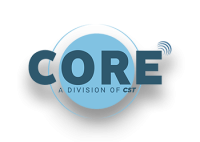Many venue operators think, “I already have Wi-Fi. Why would I need a DAS?”
For cellular subscribers – nearly every person in the United States – the first obvious advantage of the cellular network is that it is automatic and universal. The user never needs to look for an SSID, acquire and enter a password, or approve the connection and its legal fine print. This seamless access makes cellular the best choice for voice calls because users can call and be called no matter where they are. Wi-Fi can also be used for voice, but this typically requires shared applications such Zoom or Teams, or a particular device platform.

Next, cellular carriers operate on licensed spectrum with exclusive rights to that spectrum, but Wi-Fi operates on unlicensed spectrum available for anyone to use, which opens it up to potential interference. And while that latest Wi-Fi technology (Wi-Fi 6) can provide comparable data speeds and performance in normal situations, Wi-Fi systems can also suffer from congestion due to a lack of adequate bandwidth to serve the number of users on the system, which leads too low speeds and high latency. Cellular technology also has a greater range to cover larger spaces, operating mostly in frequencies much lower than Wi-Fi, which effectively travel further.
Mobility is another feature that makes cellular especially well-suited to voice calling. Users’ sessions are maintained as they move between areas, inside or outside of a venue. Voice call, streaming video and streaming audio user-experiences can be disrupted or completely lost by session interruptions.


Lastly, because of its longer range, mobility and universal access, cellular is also the technology on which First Responders and all emergency services organizations (fire, police, ambulances) have standardized for their communications. Indoor Public Safety coverage is quickly becoming legally mandated in countless areas around the country. Only a cellular DAS system can provide this mandated connectivity.

